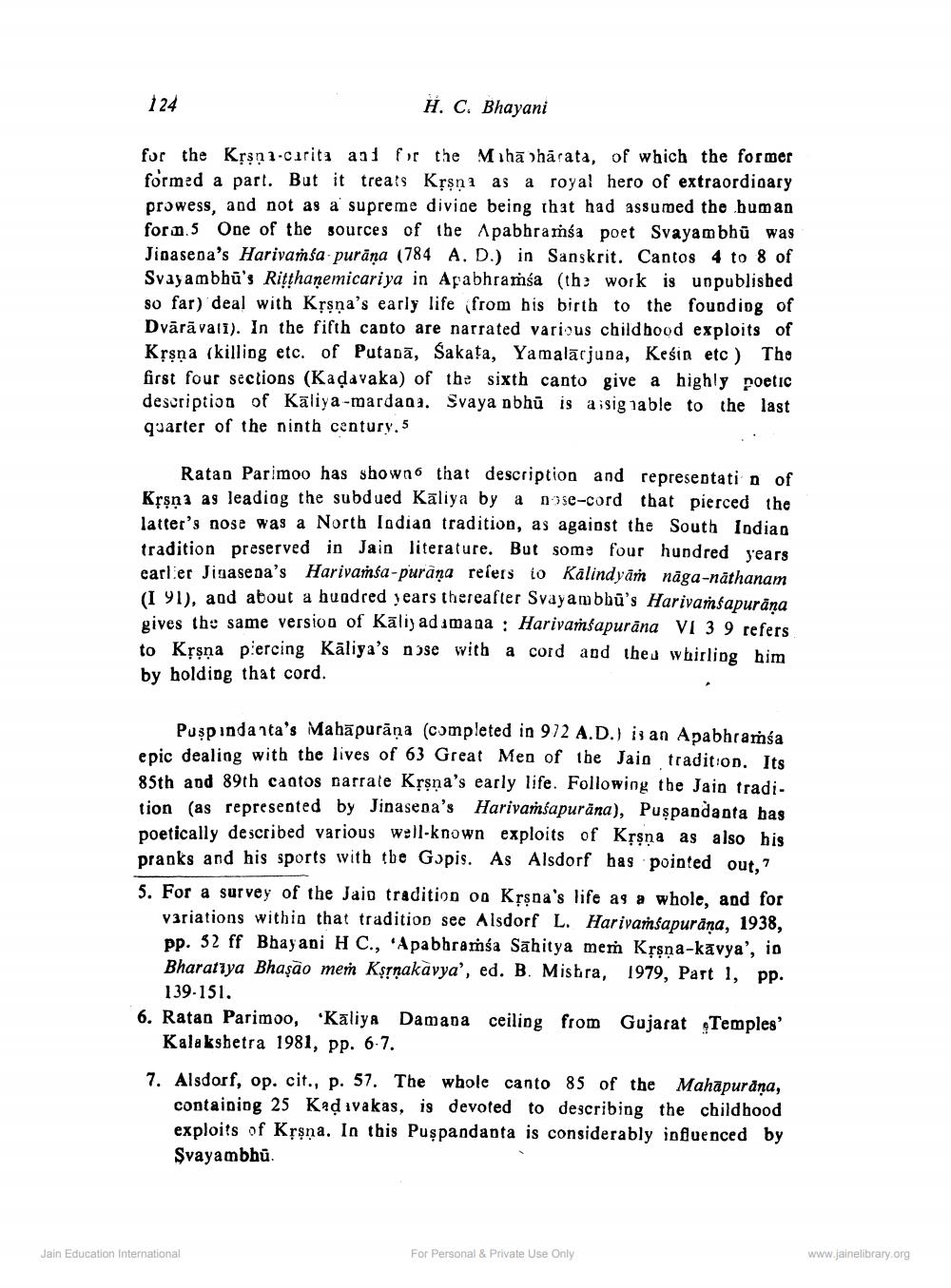________________
H. C. Bhayani
for the Krana-carita and for the Mahabharata, of which the former formed a part. But it treats Krsna as a royal hero of extraordinary prowess, and not as a supreme divine being that had assumed the human form.5 One of the sources of the Apabhramsa poet Svayambhu was Jinasena's Harivamsa purāṇa (784 A. D.) in Sanskrit. Cantos 4 to 8 of Svayambhu's Ritthaṇemicariya in Apabhramsa (the work is unpublished so far) deal with Krsna's early life from his birth to the founding of Dvārāvati). In the fifth canto are narrated various childhood exploits of Krsna (killing etc. of Putana, Sakata, Yamalarjuna, Kesin etc) The first four sections (Kadavaka) of the sixth canto give a highly poetic description of Kaliya-mardan3. Svaya nbhů is assignable to the last quarter of the ninth century. 5
124
Ratan Parimoo has shown that description and representation of Krana as leading the subdued Kaliya by a nose-cord that pierced the latter's nose was a North Indian tradition, as against the South Indian tradition preserved in Jain literature. But some four hundred years. earlier Jinasena's Harivamla-purana relets to Kalindyamh naga-näthanam (I91), and about a hundred years thereafter Svayambhu's Harivamfapuraṇa gives the same version of Kaliyadamana: Harivamlapurana VI 3 9 refers to Krsna piercing Kaliya's nose with a cord and thea whirling him. by holding that cord.
Puspindanta's Mahapuraṇa (completed in 972 A.D.) is an Apabhramsa epic dealing with the lives of 63 Great Men of the Jain tradition. Its 85th and 89th cantos narrate Krsna's early life. Following the Jain tradition (as represented by Jinasena's Harlvaniapurana), Puspandanta has poetically described various well-known exploits of Krsna as also his pranks and his sports with the Gopis. As Alsdorf has pointed out,"
5. For a survey of the Jain tradition oa Krsna's life as a whole, and for variations within that tradition see Alsdorf L. Harivamlapuraṇa, 1938, pp. 52 ff Bhayani H C., 'Apabhramsa Sahitya mem Krsna-kavya', in Bharatiya Bhação meth Kirṇakavya', ed. B. Mishra, 1979, Part 1, pp. 139-151.
6. Ratan Parimoo,
Kaliya Damana ceiling from Gujarat Temples' Kalakshetra 1981, pp. 6-7.
7. Alsdorf, op. cit., p. 57. The whole canto 85 of the Mahapuraṇa, containing 25 Kadivakas, is devoted to describing the childhood exploits of Krsna. In this Puşpandanta is considerably influenced by Svayambhu.
Jain Education International
For Personal & Private Use Only
www.jainelibrary.org




